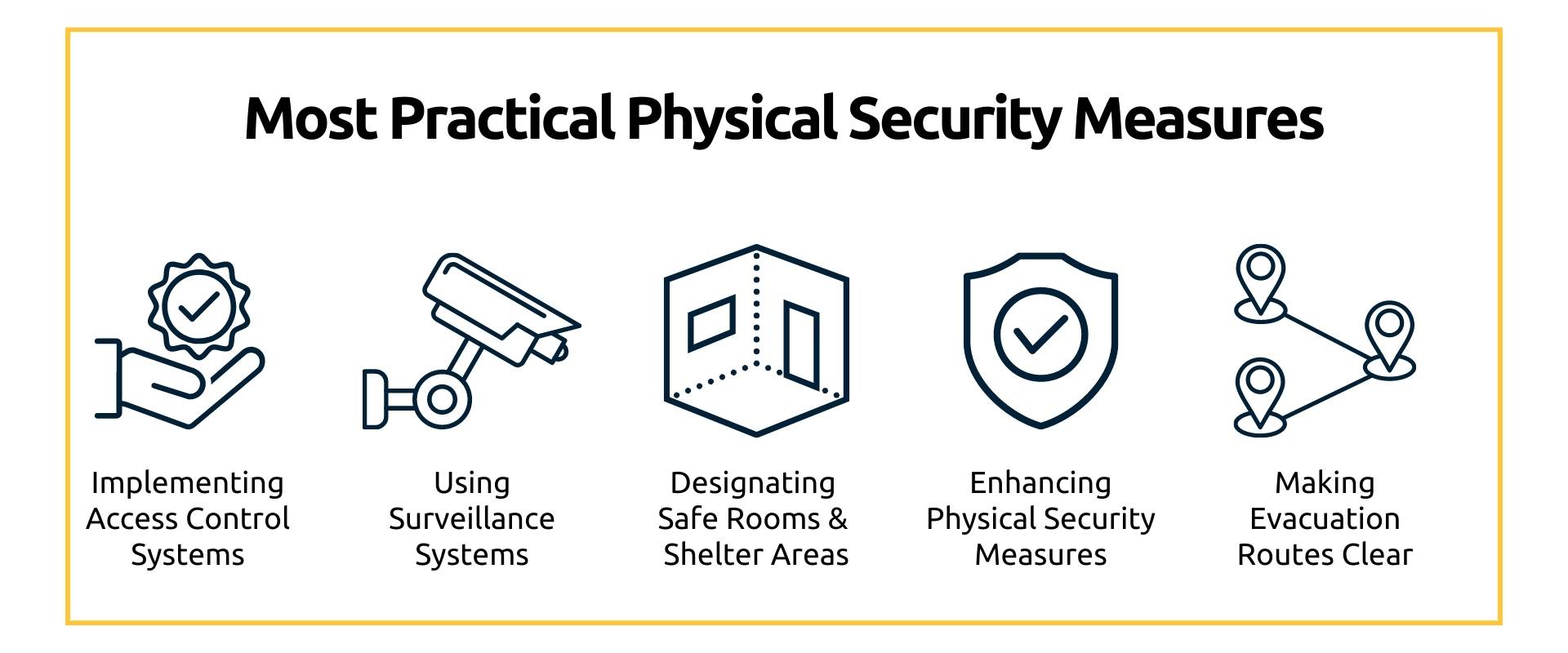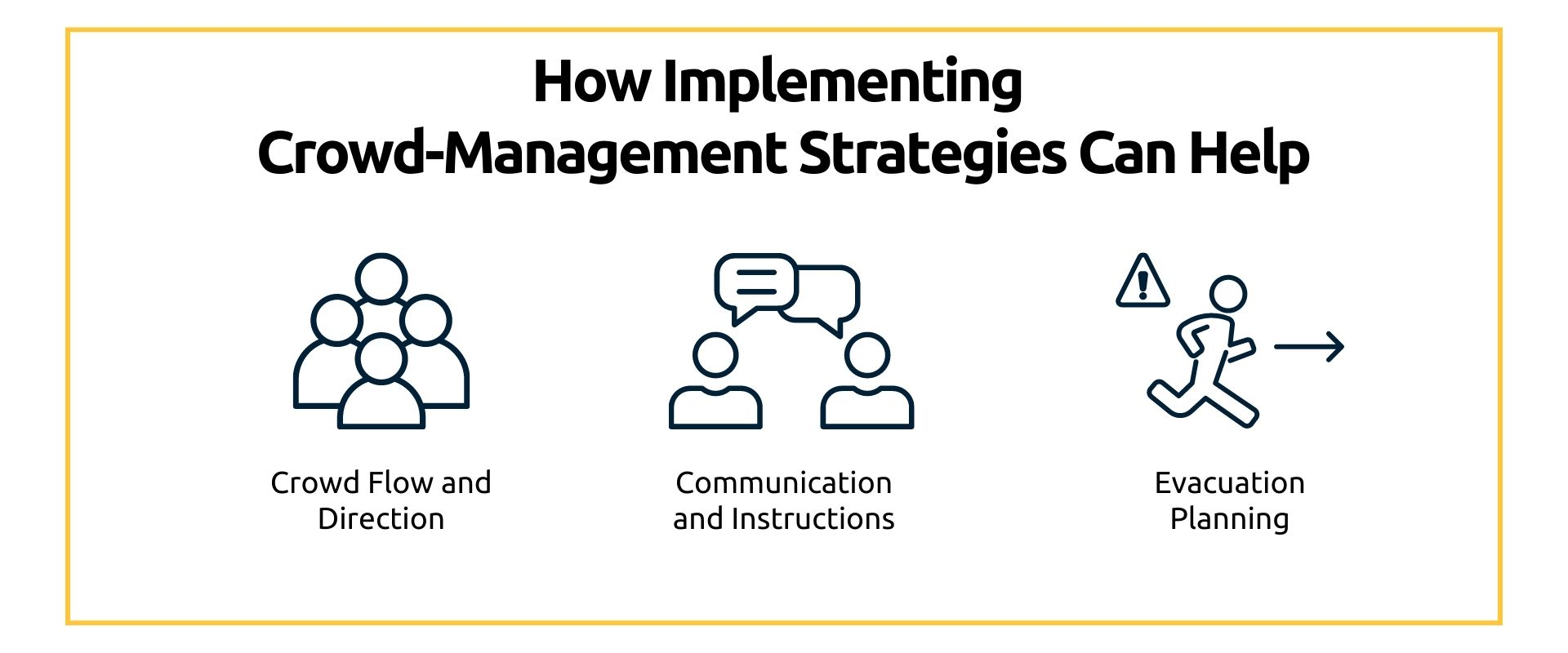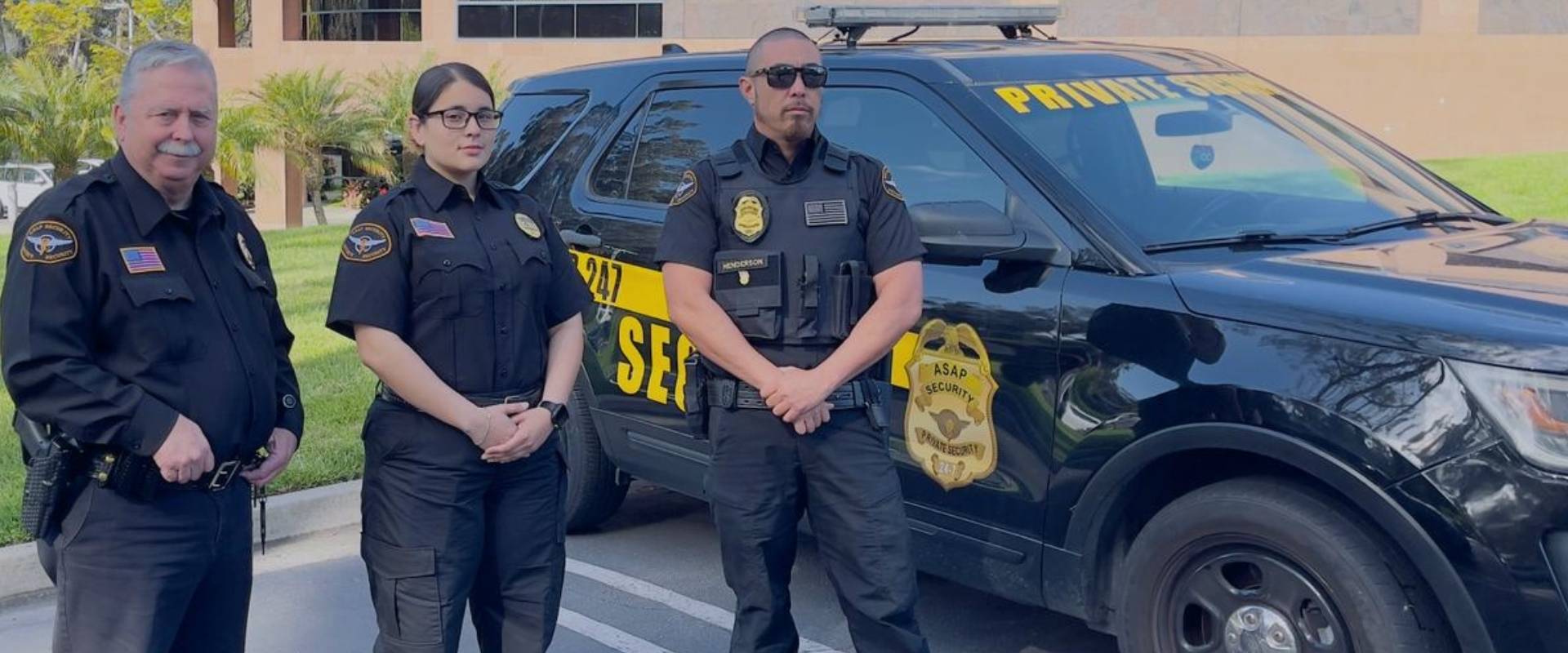Guide to Surviving an Active Shooter
In today’s world, the unfortunate reality is that companies and businesses must be prepared to respond effectively to critical incidents, including the threat of an active shooter. While these situations are distressing and challenging, having a well-thought-out active shooting response strategy can significantly increase the chances of minimizing harm and saving lives. We will explore the importance of a prepared response when faced with an active shooter incident and provide valuable guidance on what organizations should do if confronted with such a crisis.
An active shooter situation is a high-risk, unexpected occurrence that necessitates urgent action. There is no time for hesitancy or confusion since every moment is critical. By establishing a comprehensive active shooter response plan and cultivating a culture of preparedness, organizations can empower their employees to react swiftly and effectively, mitigating the impact of an active shooter threat.
In this article, we will delve into the vital components of a comprehensive active shooter response plan, such as threat assessment, communication protocols, evacuation procedures, and coordination with law enforcement. Understanding these essential elements and integrating them into organizational practices can make a significant difference in how effectively an organization responds to such a crisis.
By recognizing the significance of preparedness and equipping themselves with the necessary knowledge and strategies, organizations can enhance their ability to protect their employees, minimize the impact of an active shooter incident, and foster a safer work environment.
Join us as we dive into the realm of active shooter response and empower companies like yours to take proactive measures that can save lives and ensure the well-being of their people in the face of adversity.

The Best Response Is A Prepared Response
Preparing for an active shooter scenario is not only sensible but also necessary for businesses to protect their employees and reduce potential harm. This section goes over the major tactics and practices that businesses should implement in order to develop a prepared active shooter response.
We will cover everything from doing extensive risk assessments to building and communicating an active shooter response plan. We will also emphasize the significance of teaching personnel to recognize and report suspicious behavior, as well as performing drills and exercises, and putting in place strong security measures.
Organizations may empower their staff and improve their ability to respond effectively in the wake of an active shooter threat by emphasizing readiness.

Develop an Emergency Response Plan
An effective emergency response plan for an active shooter event should encompass several crucial components to ensure a comprehensive and coordinated response.
Here are the key elements that should be included in such a plan:
- Clear Objectives and Goals: Define the emergency response plan’s general aims and goals. This lays the groundwork and offers direction for all activities and decisions made during an active shooter scenario.
- Chain of Command and Roles: Establish a clear chain of command and identify the roles and duties of all individuals involved in the response. This includes naming incident commanders, communication officers, and first responders, and ensuring that everyone understands their tasks and who they should report to.
- Communication Protocols: Create effective communication protocols that allow for the rapid and reliable sharing of information during the incident. Outline the internal and external communication channels that will be used, such as two-way radios, public address systems, or emergency notification systems.
- Emergency Notification Procedures: Establish protocols for contacting individuals in the affected region, as well as authorities and emergency services, in the event of an emergency. Include procedures for setting alarms, making public statements, and communicating crucial information to employees, visitors, and law enforcement.
- Evacuation Plans and Safe Areas: Create evacuation plans that include clearly indicated escape routes, assembly places, and secure areas where people can seek refuge during an active shooter situation. Ensure that these plans are constantly discussed, practiced, and revised based on the layout and occupancy of the facility.
- Lockdown and Shelter-in-Place Procedures: Explain how to initiate lockdowns and shelter-in-place measures. To defend against potential dangers, provide advice on securing doors, closing blinds or curtains, and selecting safe spots within rooms.
- Continuity of Operations: Take steps to maintain the continuity of critical activities during and after an active shooter response. Identify important functions, backup systems, and other locations to help with recovery efforts.
Review, update, and practice the emergency response plan on a regular basis to ensure its efficacy and compliance with current best practices. Organizations can better plan to respond decisively and safeguard lives during an active shooter situation by staying prepared.

Conduct Training and Drills
Training and drills are critical in training people to respond successfully during an active shooter situation. Comprehensive training programs address important topics such as identifying warning signals, situational awareness, communication, evacuation methods, and sheltering tactics. Scenario-based exercises simulate real-world scenarios to improve decision-making and coordination under duress. Individuals receive role-specific training to ensure that they understand their specific tasks within the business.
Collaboration with your office security guards and local law enforcement agencies for joint training sessions improves response coordination and integration. Tabletop exercises promote debate and analysis of response techniques, allowing participants to assess their efficacy. After-action evaluations are carried out to evaluate the response, identify strengths, and identify opportunities for improvement.
Conducting refresher training sessions on an ongoing basis reinforces key concepts and provides updates on any changes to the emergency response plan. Regular practice and training improve response times, coordination, and overall readiness. These training sessions empower employees, instill confidence, and foster a culture of preparedness within the organization.

Enhance Physical Security Measures
Enhancing physical security measures is crucial in mitigating the risk and impact of an active shooter situation. By implementing robust physical security measures, organizations create a safer environment and potentially deter or delay an active shooter, allowing for a more effective response.
Some of the most practical physical security measures your organization can implement include:
- Implementing Access Control Systems
- Using Surveillance Systems
- Designating Safe Rooms & Shelter Areas
- Enhancing Physical Security Measures
- Making Evacuation Routes Clear
Enhancing physical security measures strengthens prevention, detection, and response capabilities, creating layers of protection and increasing safety during an active shooter response. While no approach guarantees complete prevention, a comprehensive physical security strategy significantly contributes to a proactive response, ultimately saving lives and reducing the impact of an active shooter event.

Implement Crowd Management Strategies
Effective crowd control tactics are critical for increasing safety and minimizing the effects of an active shooter incident. Proper crowd control can save lives and promote an ordered response in a high-stress and chaotic situation like an active shooter response.
Here’s how implementing crowd-management strategies can help:
- Crowd Flow and Direction: Establishing clear pathways and signage helps guide individuals away from danger and towards safe areas or exits. Proper crowd flow management prevents congestion and facilitates efficient evacuation, reducing the risk of injuries and panic.
- Communication and Instructions: Effective communication is vital during an active shooter situation. Well-trained security personnel can provide clear instructions and guidance to individuals, helping them make informed decisions and take appropriate actions. Regular drills and training sessions ensure that crowd management personnel are equipped with the necessary skills.
- Evacuation Planning: Developing robust evacuation plans tailored to the specific venue or facility is essential. This includes identifying multiple evacuation routes, establishing assembly points, and implementing procedures for individuals with disabilities or special needs. Crowd management personnel play a critical role in facilitating a swift and orderly evacuation process.
Companies and other organizations can help preserve order, facilitate evacuation, and deliver timely instructions to individuals during an active shooter situation by using effective crowd management tactics. Proper active shooter response planning, training, and coordination among security professionals, facility staff, and law enforcement agencies are critical to guaranteeing the safety and well-being of everyone involved.

Coordinate with Local Law Enforcement
Coordinating with local law enforcement is vital for organizations’ active shooter responses. It helps establish a partnership, enabling effective response planning and coordination.
Here’s how coordination with law enforcement can aid organizations:
- Expertise and Guidance: Law enforcement agencies have specialized skills in dealing with active shooter scenarios. Collaboration with them enables companies to benefit from their knowledge, obtaining vital insights and direction as they design successful response plans.
- Joint Training and Drills: Businesses can practice coordinated response techniques by participating in joint training exercises and drills with law enforcement. This collaboration promotes communication, familiarizes each participant with their roles, and increases response effectiveness overall.
- Incident Command Structure: Coordination with law enforcement aids organizations in developing an incident command structure that adheres to recognized norms. During an incident, this allows for seamless integration, fast decision-making, and resource allocation.
- Communication and Information Sharing: Establishing communication protocols with law enforcement allows for the prompt flow of information during an active shooter scenario. Accurate information about the situation and ongoing operations enables companies to make informed decisions and put suitable safeguards in place.
- Mutual Support: Working with law enforcement establishes a network of mutual assistance. Law enforcement may be relied on for a rapid reaction, specialized resources, and knowledge, as well as crucial information about the premises to facilitate law enforcement activities.
By coordinating with local law enforcement, organizations enhance their preparedness and response capabilities for active shooter responses. This collaboration fosters a proactive and unified approach, prioritizing the safety of individuals and optimizing the overall response.

What To Do Should The Worst Happen
In the dreaded event that an active shooter scenario occurs, businesses must be prepared to respond quickly and efficiently. Organizations may improve their response skills and emphasize employee safety and well-being by understanding and following these critical steps.
Communicate with Attendees
Effective communication with attendees during an active shooter situation is a crucial aspect of a proper active shooter response. Prompt and clear communication can help individuals understand the threat, make informed decisions, and take appropriate actions.
Here are some general principles for communicating with attendees:
- Provide Clear Instructions and Guidance: During a crisis, clear directions and guidance are critical. Communicating with guests, organizers, and security professionals can provide explicit instructions on what measures to take, such as evacuation routes, shelter-in-place procedures, or lockdown procedures. This provides folks with a sense of direction and purpose as they handle the scenario.
- Be Calming and Reassuring: Effective communication can assist calm individuals and decrease panic during a high-stress emergency, such as an active shooter scenario. Reassuring words presented calmly and authoritatively can create a sense of control and assist participants in maintaining their composure while adhering to safety regulations.
- Prevent Misinformation From Spreading: Misinformation can spread quickly in chaotic situations, generating confusion and impeding active shooter response attempts. Organizers can refute rumors and offer accurate information by establishing dependable communication lines, minimizing panic, and ensuring that individuals receive appropriate instructions.
Organizations should have robust communication protocols and systems in place to ensure that crucial information reaches attendees promptly and accurately during such critical incidents.

Follow Law Enforcement’s Instructions
Companies and other organizations gain immensely from following law enforcement’s advice during an active shooter situation. Law enforcement officials have the knowledge and experience required to manage and neutralize threats efficiently. Businesses can safeguard the safety and well-being of their employees, customers, and visitors by following the guidelines and advice they provide during an active shooter response. Officers also have real-time access to information and updates on the changing dynamics of an active shooter response.
Remember that during an active shooter response, law enforcement officers serve as a key communication channel. Their instructions include vital information such as evacuation routes, shelter-in-place techniques, and other safety precautions. Organizations that follow their advice promote good communication throughout the premises, decreasing confusion and creating a cohesive reaction.
During an active shooter response, organizations should prioritize obeying law enforcement orders. Collaboration and cooperation with law enforcement are critical to managing the incident successfully and protecting the safety of all those involved.

Establish a Post-Incident Support System
In the wake of an active shooter situation, it is critical to establish a post-incident support structure. It helps individuals cope with the emotional and physical consequences of the traumatic incident by providing critical aid and resources.
A support system must address a person’s psychological well-being. Individuals experiencing trauma, sorrow, anxiety, and other mental health difficulties may be left with long-lasting emotional scars as a result of active shooter occurrences. Professional counseling, therapy, and mental health services are critical in assisting people to process their emotions and seek treatment.
It is also critical to address legal and financial concerns. Navigating complicated legal processes and dealing with financial responsibilities can be difficult. Access to legal professionals, resources, and information about victim compensation programs preserves individuals’ rights while also assisting with financial difficulties.
Finally, a support system focuses on education and readiness for future crises. Individuals’ knowledge and skills in reacting to emergencies are enhanced through training sessions and workshops, which promote readiness and resilience.

Partner with ASAP Security for Active Shooter Preparedness
Proactive measures are essential to safeguarding your business against the devastating impact of an active shooter incident. With ASAP Security Corporate Security Guards by your side, you can take proactive steps to enhance your preparedness and response capabilities.
Our comprehensive security solutions are tailored to meet the unique needs of your company. From conducting thorough risk assessments to developing and implementing effective response plans, ASAP Security ensures that you are well-equipped to handle an active shooter situation.
By partnering with ASAP Security, you gain access to a team of experienced professionals dedicated to your safety and security.
Contact ASAP Security to learn more about our active shooter preparedness services and take the first step toward protecting your employees and your business.
